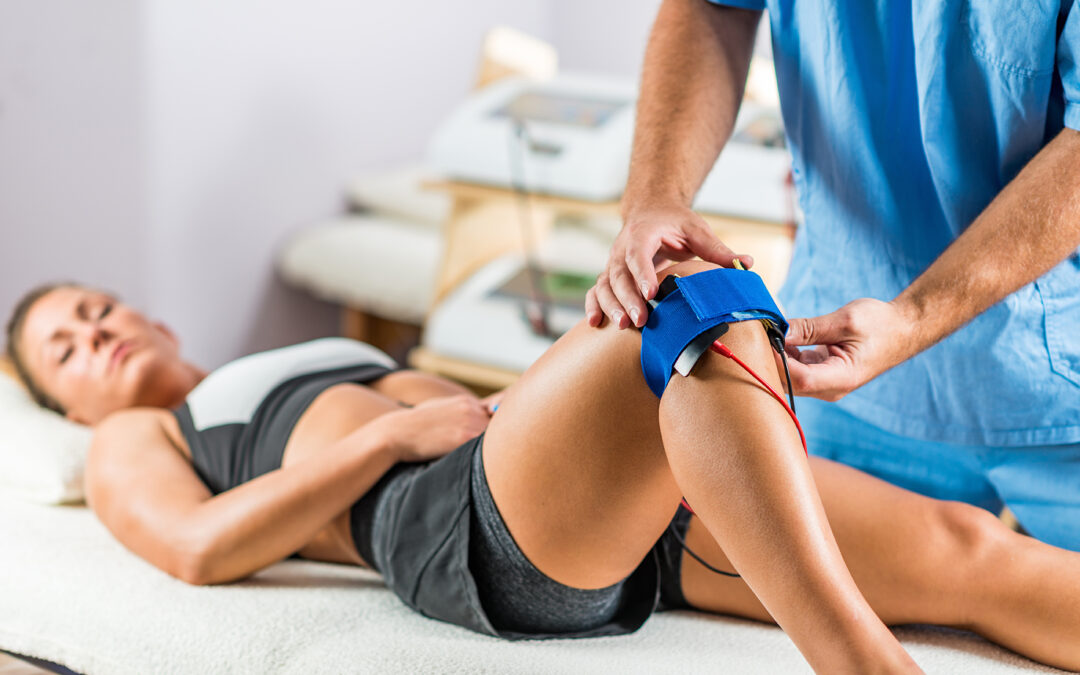Contents
If the pain in your knees feels unbearable, you are not alone. Knee pain can restrict your ability to be active, hinder your motivation to be active or cause immense pain during any kind of movement. Stiff knee pain is very common in the U.S. with 25% of U.S. adults experiencing frequent and impairing knee pain. Especially with age, people experience more frequent or chronic knee pain, or the knee pain may become less bearable over time as well.
Stiff, painful knees can restrict your ability to move and feel like they’re constantly locked in one position. You might also feel a painful clicking in the knee joint. Or you may see swelling or feel weakness in the joint.
How can I treat my stiff knee pain at home?
You can use certain exercises or treatments at home to soothe stiffness and pain in your knees. These are practices that you can do at home or really at any time:
- RICE method
This is a well-known practice with physical therapists, medical professionals and emergency responders because of its ability to reduce swelling and relieve tension.
RICE is an acronym for helpful steps to reduce pain and swelling in a limb. First, R stands for rest, so lie down on your back and relax your body. I stands for ice, so place a cold compress or ice bag on your knee. Then C stands for compression, so you would wrap the knee in either a cloth or compression bandage to keep consistent pressure on the area. Finally, E stands for elevation. You want your knee to be above your heart because it will ensure that blood is moving out of the area and help with circulation. Elevation will help with swelling, throbbing and pain.
This is helpful because elevation helps reduce tension and increase blood flow and icing can reduce inflammation and further reduce pain too. Overall, using the RICE method can help relieve pain and help your knee relax.
- Heat
Using a heat pack or hot-water bottle can help with stiff knee pain greatly by helping the knee relax. It helps because heat relaxes and loosens the muscles around your knee. It can help ease stiffness and relieve tension in the knee. Heat also increases blood flow, which can help speed up healing.
- Exercise
Certain exercises like stretches from yoga or tai chi can help with stiff, painful knees. For example, you can strengthen and stretch surrounding muscles like the hamstrings, quads and calves, which are all near your knee. This can help release tension in the muscles and in the knee joint. Yoga or tai chi exercises are also beneficial because they can vary in intensity based on your abilities.
How would a physical therapist treat stiff, painful knees?
Physical therapy includes a range of treatment options. Which one is used to help your knee depends on the cause of your stiff, painful knees. A physical therapist’s goal will be to target the specific underlying cause of your knee symptoms. Some of the treatments they may use include:
- Gentle joint stretching
This may read similar to at-home exercises, but the purpose of gentle joint stretching is to see how flexible or painful a certain area is. A physical therapist may have you bend your knee toward your chest to see how mobile your knee is, or they may ask you to do a lunge until you feel discomfort to see how weak or strong that area is.
- Soft tissue manipulation
This kind of therapy uses deep pressure and stretching to break up knotted or rigid muscle tissue, relax muscle tension, and move fluids in tissue. Soft tissue manipulation can help with muscle inflammation and repairing tissue after a knee injury.
- Aquatic therapy
Some forms of physical therapy can be difficult to approach with a painful knee joint. Aquatic therapy can be a form of treatment that doesn’t feel scary. Similar on-land movements and exercises are used in aquatic therapy to help with reducing stiffness and pain while increasing strength and mobility.
- Joint mobilization
A physical therapist in this kind of treatment would use manual physical therapy to do slow, repetitive motions to loosen up a stiff knee joint. The slow movements are meant to promote flexibility in your knee while increasing your range of motion without causing further pain or stress on that area. It also can reduce pain in the knee by increasing circulation and loosening up the muscles around the knee.
- Myofascial release
Myofascial release is a type of gentle, constant massage that targets trigger points or knots in the body. A physical therapist will apply pressure until they feel the tension release in that area. Myofascial release treatments can help you with pain management, increase your range of motion and improve your circulation around your knee. This treatment can help you with knee soreness, increase the recovery process, and decrease knots and tension.
Lattimore PT can help your stiff, painful knee
At Lattimore Physical Therapy, you can talk to a physical therapist who can help you find the best practices, at-home exercises, and PT treatments that can reduce the pain and stiffness in your knees. You can get a personalized home exercise program from one of our physical therapists to help you with at-home treatments when you can’t come to our clinic. As well as with our personalized treatment programs, we can gear treatments to meet your goals and make progress in your movement capabilities.
Contact our team today for more information or to schedule an initial appointment.



